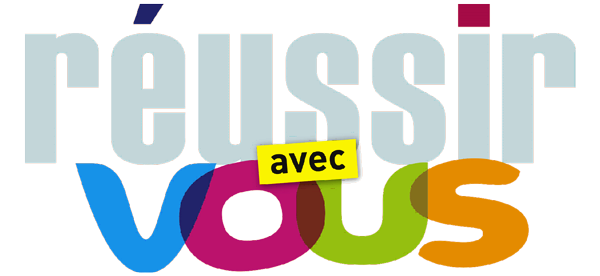[size=13.3333]Dear Colleagues, [/size]
[size=13.3333]It is a great pleasure to announce you the organization of 14th International Conference on Oxidative Stress Reduction, Redox Homeostasis and Antioxidants, which will be held in Paris, next June 12-13, 2014. [/size]
[size=13.3333]ISANH was created in 1998 during the first world congress on Superoxide Dismutase. 16 years later, many positive steps were observed. However, the world of antioxidants is remaining controversial. Many questions remain unanswered with many contradictions. We can dare to say today that we failed to find a standard to evaluate oxidative stress markers and antioxidants capacity. We failed also with many clinical trials with good antioxidants because we don't have a "golden standard" to compare the results.[/size]
[size=13.3333]During last ISANH Congress on Antioxidants, one of the main discussion showed that antioxidants play their role by modulating redox signaling pathways and not a counter "balance" to oxidant formation. They act to modulate cells signaling domains in which redox signaling occurs. [/size]
[size=13.3333]Mitochondria are a localized signlaing domain and ROS (Superoxide and Hydrogen Peroxide) generated by respiratory chain are signaling molecules.[/size]
[size=13.3333]The questions are:[/size]
[size=13.3333]- How mitochondria play a strategic role to MODULATE or RESTORE or RESET the redox signaling pathways?[/size]
[size=13.3333]- How mitochondria can affect transcription factors like Nrf2-Keap1 and finally activate and modulate antioxidants genes expression?[/size]
[size=13.3333]In pathological conditions, such as neurodegenerative diseases, how can we restore or modulate signaling pathways?
Can we use exogenous antioxidants to target mitochondria, to modulate the redox state of cells and reduce oxidative damages at the level of mitochondrion?[/size]
The Oxidative Stress Reduction Strategies
[size=13.3333]The Challenge of Antioxidants in 2014 is to Detect, Prevent & Treat all Oxidative Stress Related Diseases...[/size]
[size=13.3333]For this 16th Anniversary of ISANH, we will highlight some specific topics with strategic impact on human health and discuss about:[/size]
- [size=13.3333]Oxidative Stress & Antioxidants Biomarkers: The Standardisation Challenge
Moving Towards a Successful Standard[/size]
- [size=13.3333] The Challenge of Antioxidants in 2014 to Prevent & Treat Metabolic Syndrome, Neurodegenerative Diseases, Liver Fibrosis, Kidney Diseases, Infertility...[/size]
[size=13.3333]
The Challenge of Antioxidants in 2014 is to Prevent & Treat Metabolic Syndrome, Neurodegenerative Diseases, Liver Fibrosis, Kidney Diseases, Infertility...but also to target the redox dysregulation.[/size]
[size=13.3333]We will underline the impact of oxidative stress on ageing, neurodegenerative diseases, metabolic syndrome (obesity, hypertension and diabetes), kidney diseases, liver fibrosis, fertility... We will select speakers who highlight how to target oxidative stress related neurodegenerative diseases and metabolic syndrome.[/size]
Redox Regulation and Redox-Active Agents: Toward a Oxidative Stress Reduction with a Pro-Antioxidants Effect
[size=13.3333]ISANH Antoxidants 2014 will discuss the mechanisms of redox regulation of cellular processes. Little is known of what the specific targets of ROS are and how oxidant and antioxidant signals are transmitted in the cell. To understand mechanisms of redox control and its role in all oxidative stress pathologies and aging, we need to know identities and functions of most of the participants in the redox process. We hope that Paris Antioxidants 2014 will provide a better understanding of the role of the aging process and redox control in physiological and pathophysiological states, and will lead to new therapeutic and disease-preventive agents.[/size]
[size=13.3333]
Among questions which will be discussed during Antioxidants 2014 World Congress:[/size]
- [size=13.3333]How to reduce Oxidative Stress and increase pro-antioxidant states?[/size]
- [size=13.3333]How to use ROS to reduce oxidatvie stress at the level of mitochondria?[/size]
- [size=13.3333]What is the exact role of mitochondria to modulate:[/size]
- [size=13.3333]Nrf2 / Keap 1 pathways?[/size]
- [size=13.3333]NfKb pathways?[/size]
Stem Cells & Oxidative Stress Modulation[size=13.3333]
Paris Antioxidants 2014 will highlight the subtle role of ROS and Oxidative Stress in Stem Cells protection and differentiation.[/size]
[size=13.3333]
We will organise a round table discussion to discuss the subtle balance between redox homeostasis, ROS and mitochondria bosting factors.[/size]
[size=13.3333]
With this exciting program, we wish to meet you in Paris next July.[/size]
[size=13.3333]Pr Marvin Edeas[/size][size=13.3333] - Chairman of the Scientific Committee
[/size][size=13.3333]All abstracts for oral or poster presentation in the proceedings will be submitted to the Scientific Committee. [/size][size=13.3333] [/size]
[size=13.3333]Abstracts have to be sent as a word file only (no PDF or other format accepted) to the following address: isanh[at]isanh.com [/size][size=13.3333] [/size]
[size=13.3333]Please indicate if you wish submit your abstract for [/size][size=13.3333]Oral or Poster[/size][size=13.3333] presentation.[/size]
[size=13.3333]Please also indicate in which session you would like present your abstract. [/size]
[size=13.3333]For formal modalities about abstract submission, [/size][size=13.3333]please click here.[/size][size=13.3333]
[/size]
[size=13.3333]Abstracts received without formal modalities will be note studied.[/size] [size=13.3333] [/size]
[size=13.3333] [/size][size=13.3333] [/size] Deadline for Oral Presentations Submission: April 10th
Deadline for Poster Presentations Submission: April 15th
After these dates, no abstract will be accepted.









